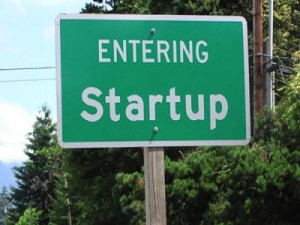In a previous post, I asked my students to illustrate the typology that Gans & Stern (2003) proposed for commercialization strategies of technology entrepreneurs. The operation was an enormous success as each of the four generic strategies received a fair number of examples, with very useful references. Here follows a compilation. Many thanks to all the contributors (and especially to Nissa Merckx whose summary is closely followed here)!
Attacker’s advantage
This environment is characterized by tight competition between start-up firms and incumbent firms for technological leaderships in “niche” markets. Incumbent firms do not control complementary assets. Thus, start-up firms have the opportunity to acquire a leading position by “smartly” using the existing “blind spots”. For an incumbent firm to avoid any use of “blind spot”, it must be continuously present on the market and thus practice continual reinvention while anticipating new behaviors.
- Swiss watch industry. Used to be leader in mechanical watches (area in which it specialized), but it didn’t anticipate technological development and new possibilities of innovation. This enabled the “attackers” (the new entrants), such as a Seiko, a Japanese company, to take advantage of that “blind spot” and innovate by producing electronic watches (see here).
- Mobile telecommunication industry. Ericson and Nokia, when they where start-ups firms, were able to develop rapidly (thanks to knowledge spillovers coming from the existing leader firm, Motorola). This gave them the opportunity to compete with Motorola and gain market shares. Today, Samsung and Apple are continuously innovating, allowing them to keep a leadership position on the market (see here and here).
- Internet. On this type of market, imitation (together with improvement of existing technologies) is common as it is made possible by weak IP protection.
- Search engines. Google – now holding the leadership in the industry – was developed by imitating and improving AltaVista’s algorithms, the leader in search engines at the time.
- Social Networks. In this industry, while imitation is inevitable, there is a constant race toward technological innovations (adding new features, new applications). Facebook is the current leader in social networks and for the new competitors to be able to compete and surpass it, they must look for its “blind spot”. We can observe that existing social networks are able to survive by positioning themselves and occupying niche markets (previously “blind spots”): Twitter (short messages), Facebook (keeping in touch), Myspace (bands & artists), Google reader (sharing information).
- Portable Music Industry. Apple was able to enter the market through existing “blind spots” on the industry (i.e., by launching a digital music player and distribution system) and gain technological leadership against Sony who was the first market leader and inventor of the “walkman” (see here and here).
- Video game industry. Nintendo (1997-2007) was able to keep its position as an incumbent by being continuously present on the market while new competitors weren’t able to sustain their development (see here).
- US automobile market. Toyota and Honda were able to take advantage of the “blind spots” available on the US automobile market (namely those from the Big 3 Companies).
Ideas factories
Start-up product entry on the market is costly, so if they want to realize their innovation potential, they will have to compete with each other in order to secure themselves a partnership with an incumbent firm. This practice will enable the latter to make use of the external start-up innovation that will be positive for its development and allow successful technology innovation.
- Large services industries. They may outsource new innovative services, such as software applications, to new start-ups (examples are Salesforce, 3M and Dell).
- Car Industry. Due to high market entrance cost, start-ups will favor the option of selling their innovation on the “market for ideas”; for instance, better batteries of improved engines (see here).
Reputation-based idea trading
In this environment, start-ups do not represent much competition for the incumbent. As a result, their ideas and patent inventions may sometimes be ‘stolen’ and imitated by incumbent firms, as shown by the following examples.
- Band-Aid idea “stolen by” Johnson & Jonhson (see here).
- Speculoos paste idea “stolen by” Lotus (see here).
Other cases of Reputation-based trading imply the choice of the incumbent to trade ideas with start-ups.
- Collaboration between universities and start-ups. Universities constitute reliable partners (reputation and knowledge) for start-up industries, mainly in emerging fields and high technology (see here).
- Agribusiness for genetically engineered seeds (see here).
Greenfield competition
In this strategy environment, start-up can choose whether to compete or to cooperate with an incumbent firm. They are able to protect their own innovations from possible imitations and thus, they do not need the complementary assets of incumbents. With the following examples, we observe that this strategy can also be used by “large established companies”.
- Cooperation
- Biotechnology. Merck & Co brought, through partnerships, two of its leading drugs on the market (see here).
- Chemical industry. Union Carbide and Montecatini c have actively licensed their polyethylene and polypropylene technology on their own (see here).
- Firewalls. The agreement that Gil Shwed and two friends concluded with HP and Sun Microsystem allowed their company (Check Point) to become worldwide leaders on the market of firewalls (see here).
- Video games. Nintendo chose a cooperative strategy since it would be more beneficial as it always requires innovation.
- Competition. Xerox chose a competitive strategy because “their product was good enough to succeed on its own”.


